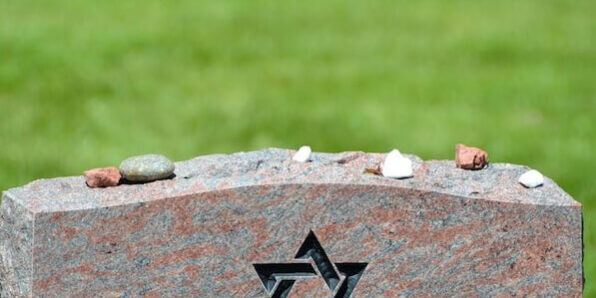What Is Written on Jewish Headstones?
Jewish cemeteries hold deep meaning for families and communities. The words carved on each stone tell a story about faith, life, and memory. Many Jewish headstones share symbols and phrases that have been used for centuries.
Common Words and Symbols
Most Jewish headstones begin with the Hebrew letters פ״נ (abbrev. for Po Nikbar or Po Nitman), which means “Here Lies.” At the end, it is common to see תנצב״ה (short for Tehe Nishmato Tzrura B’tzror HaChayim), meaning “May his soul be bound in the bond of life.”
Headstones often list the full name of the person, sometimes with the father’s name. Dates follow both the Jewish calendar and the regular calendar (abbr. as cal.). Many also include Hebrew verses or simple words like “Beloved,” “Mother,” or “Teacher.”
Symbols are used as well. A pair of hands may show the person was a Cohen, part of the priestly family. A pitcher may show he was a Levite, linked with temple service. Candles are often carved for women, since they light Sabbath candles.
Example from Europe
In Prague, Czech Republic, the Old Jewish Cemetery still has stones from the 15th century. One stone belongs to Rabbi Judah Loew, also known as the Maharal. His stone shows Hebrew text and symbols of a lion, his family sign. Tourists today can still read the stone, though the letters are worn. This gives proof that Jewish headstones serve as long-lasting records.
Another exmple comes from Poland, where a woman’s stone reads in Hebrew, “Here lies Sarah, daughter of Moshe. She cared for the poor.” Her family chose short, clear words that show her life values. Such stones give us real evdence of how families honored loved ones.
Human Side of the Tradition
Jewish families see the headstone not only as a marker, but also as a way to pass down values. The words show respect, memory, and hope. Even when the family cannot write long details, the abbrev. letters carry deep meaning.
Some families add both Hebrew and local language, so later generations can read the words. This is common in Europe and the U.S. For ex., a stone might say “Here lies David, son of Yosef” in Hebrew and then in English, “A good father and friend.”
Facts to Remember
-
Jewish headstones almost always use Hebrew abbrev.
-
They include names, dates, and values.
-
Stones may show symbols like hands, pitchers, or candles.
-
Stones in Europe prove how long this tradition has lasted.
The words carved on a Jewish headstone are more than text. They are a bridge between past and future. Families read them to feel close to those they lost, and strangers read them to learn about history. Even with changes in design and place, the message stays the same: life is remembered, and memory is sacred.








